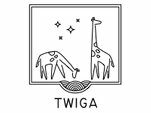TWIGA focuses on the combination of remote sensing data and ground-based observations to run models and develop products. The quality and amount of ground-based observations determine the accuracy of data that is used for satellite calibration and modeling, such as crop models.
Maintaining monitoring networks requires high resources, thus it is important to assess where observations are most needed. To determine how many stations are required to accurately estimate climate variables such as rainfall, statistical methods are applied. Those methods, however, require a minimum set of assumptions about, for example, average rainfall in a given region and its standard deviation. This is challenging in regions where no ground monitoring is available. Using satellite rainfall data from TAMSAT we estimate how many rainfall stations are required to correctly estimate rainfall up to an error of 5%.



In order to estimate how many observations are required, a priori information such as average rainfall, standard deviation, as well as acceptable errors. Currently, these input data are taken from high-resolution (~4 km) TAMSAT satellite rainfall estimates in order to derive the optimal number of observations for a 0.25° grid (~25 km).
Our next steps are to estimate the required observations both based on TAMSAT and TAHMO station data and provide heatmaps of where ground monitoring is needed most.
Written by: Shakir Ahmed and Jan Friesen
UFZ

